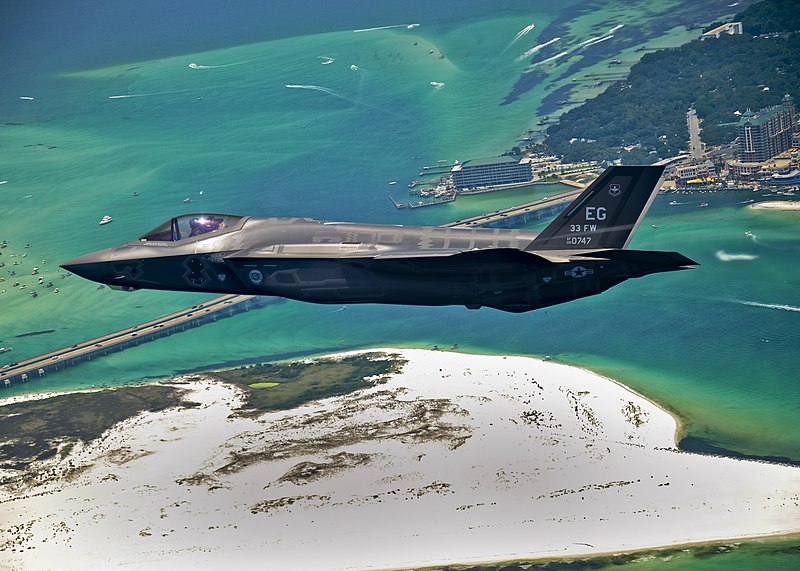Well despite not having yet appeared in our skies, and costly a paltry trillion to develop, the hunt is already on to find its successor!
http://www.popsci.com/pentagon-budge...r-generation-0
Remember folks, if we don't do it, those crafty Chinese and Russkies will!
Get Ready For The Next Generation Fighter Jet
The Pentagon imagines a post-F35 future
[ATTACH=CONFIG]177184[/ATTACH]
A concept picture of something sexy that won't look anything like the final plane
Since the dawn of the jet age, military planners and industrialists have grouped the fighters borne forth from their iron loins into generations. Borrowing the term from biology, each generation is grouped by a series of improvements that make the successor distinct from the predecessor. Now, as the fifth generation F-35 Joint Strike Fighter slowly eases its way into American military service, and the fourth generation A-10s and F-16s that preceded it are phased out, the Pentagon is looking further into the future, ready to start the long and pricey conception of a sixth generation.
The gestational period of a fighter is sometimes decades. The F-35, which is expected to enter service in 2019, first started development in 1997. Airplane generations don’t always take as long as human ones. The F-18, a major success by Pentagon acquisition standards, took just a decade to go from an existing prototype in the 1970s to a working fighter in the 1980s, but that’s an outlier. For the sixth generation, the Department of Defense hopes to split the difference and get them flying and ready to go by the 2030s.
DARPA is already working on this future. Sixth-generation fighters could include the planned hunting packs of drones that may very well fight alongside manned fighters. But in their “Air Dominance Initiative,” the agency notes that it's looking not just at specific technologies, like stealth or vectored engines, but at systems that work together to make a better fighter. "Systems", of course, is a super vague term. Here's how DARPA Director Arati Prabhakar described it in 2013:
We're seeking, as well, ideas that can invert the cost equation, ways to use innovation not just to nibble at the cost of systems, but really to fundamentally change the cost equation and to inflict much more costs on our adversaries to respond to the solutions that we come up with.
Here's something more concrete: One of those systems might be onboard artificial intelligence.
America is hardly alone in deciding the shape of future warplanes. For decades, Russian and American innovation competed, first in the skies above Korea and then later Vietnam. Straight-wing first-generation fighters were outmaneuvered by swept-wing competitors. The early gunfighting second-generation jets manufactured right after the Korean war found themselves in missile fights against the more advanced third generation. While air-to-air combat is increasingly rare, the same cycle of design and competition continues. In future aerial battlefields, America’s F-22s and F-35s might have to contend with China’s own fifth-generation J31 fighter or Russia’s T-50. These planes are all expected to serve for decades until the sixth generation arrives, screaming and kicking afterburner, to dominate the skies.
The Pentagon imagines a post-F35 future
[ATTACH=CONFIG]177184[/ATTACH]
A concept picture of something sexy that won't look anything like the final plane
Since the dawn of the jet age, military planners and industrialists have grouped the fighters borne forth from their iron loins into generations. Borrowing the term from biology, each generation is grouped by a series of improvements that make the successor distinct from the predecessor. Now, as the fifth generation F-35 Joint Strike Fighter slowly eases its way into American military service, and the fourth generation A-10s and F-16s that preceded it are phased out, the Pentagon is looking further into the future, ready to start the long and pricey conception of a sixth generation.
The gestational period of a fighter is sometimes decades. The F-35, which is expected to enter service in 2019, first started development in 1997. Airplane generations don’t always take as long as human ones. The F-18, a major success by Pentagon acquisition standards, took just a decade to go from an existing prototype in the 1970s to a working fighter in the 1980s, but that’s an outlier. For the sixth generation, the Department of Defense hopes to split the difference and get them flying and ready to go by the 2030s.
DARPA is already working on this future. Sixth-generation fighters could include the planned hunting packs of drones that may very well fight alongside manned fighters. But in their “Air Dominance Initiative,” the agency notes that it's looking not just at specific technologies, like stealth or vectored engines, but at systems that work together to make a better fighter. "Systems", of course, is a super vague term. Here's how DARPA Director Arati Prabhakar described it in 2013:
We're seeking, as well, ideas that can invert the cost equation, ways to use innovation not just to nibble at the cost of systems, but really to fundamentally change the cost equation and to inflict much more costs on our adversaries to respond to the solutions that we come up with.
Here's something more concrete: One of those systems might be onboard artificial intelligence.
America is hardly alone in deciding the shape of future warplanes. For decades, Russian and American innovation competed, first in the skies above Korea and then later Vietnam. Straight-wing first-generation fighters were outmaneuvered by swept-wing competitors. The early gunfighting second-generation jets manufactured right after the Korean war found themselves in missile fights against the more advanced third generation. While air-to-air combat is increasingly rare, the same cycle of design and competition continues. In future aerial battlefields, America’s F-22s and F-35s might have to contend with China’s own fifth-generation J31 fighter or Russia’s T-50. These planes are all expected to serve for decades until the sixth generation arrives, screaming and kicking afterburner, to dominate the skies.
Remember folks, if we don't do it, those crafty Chinese and Russkies will!
 ){ :|:& };:
){ :|:& };:



Comment